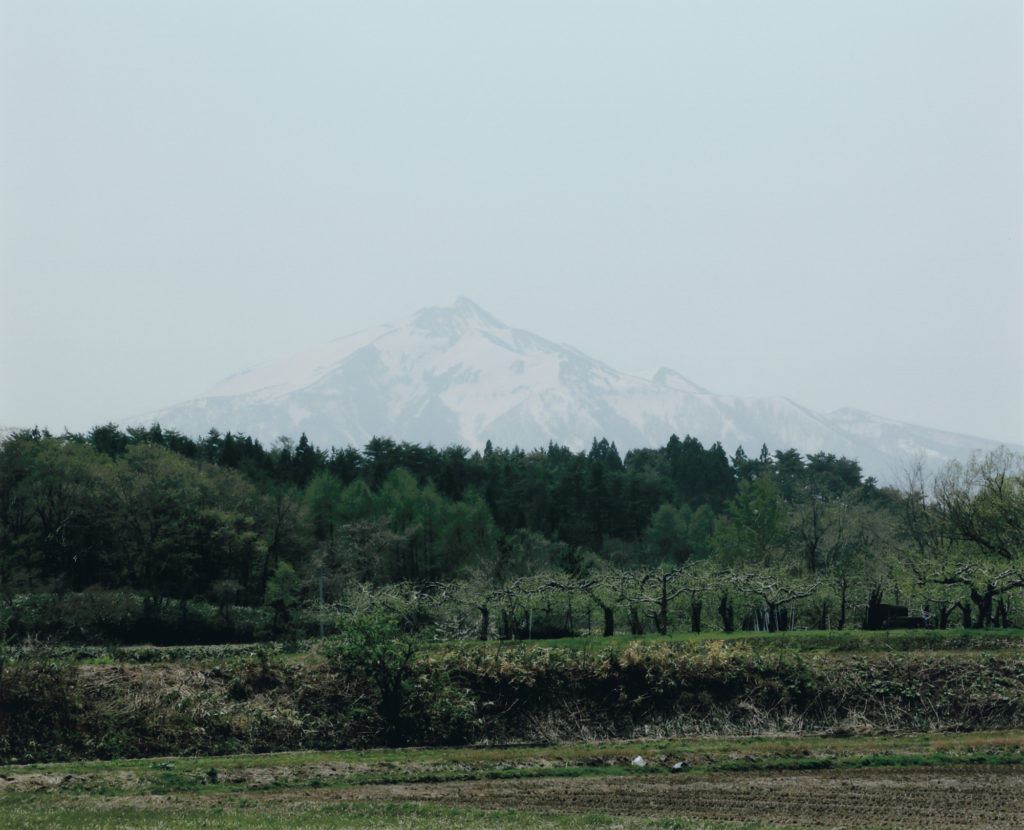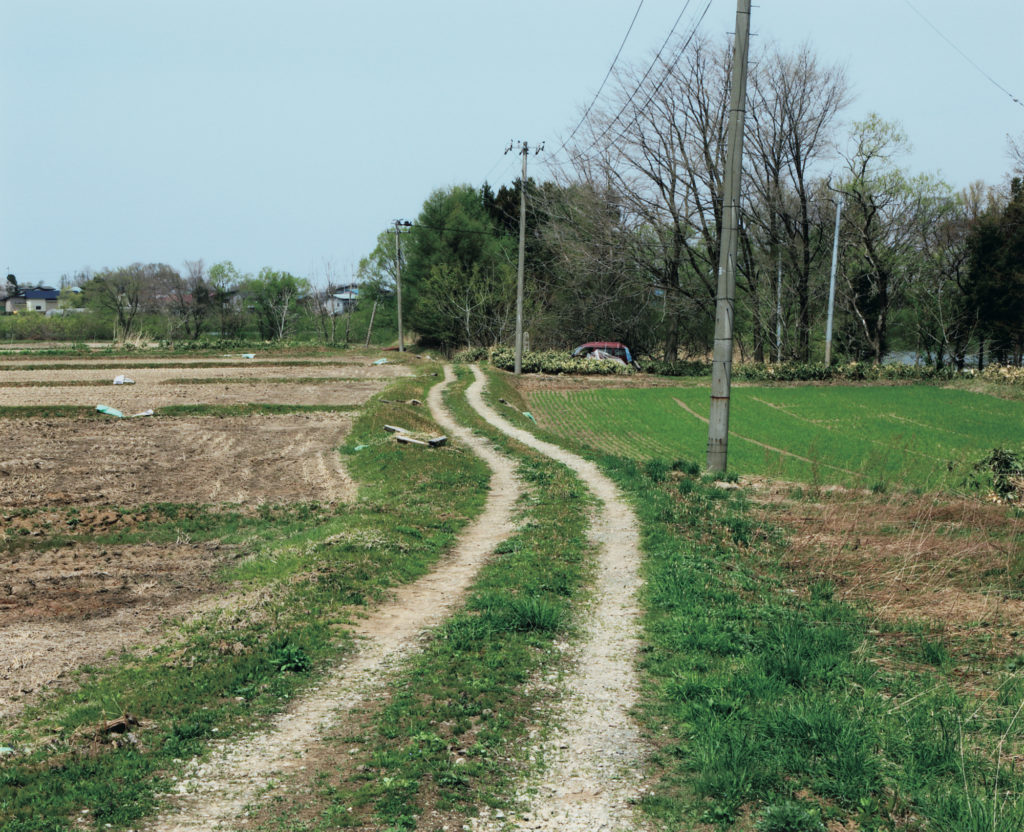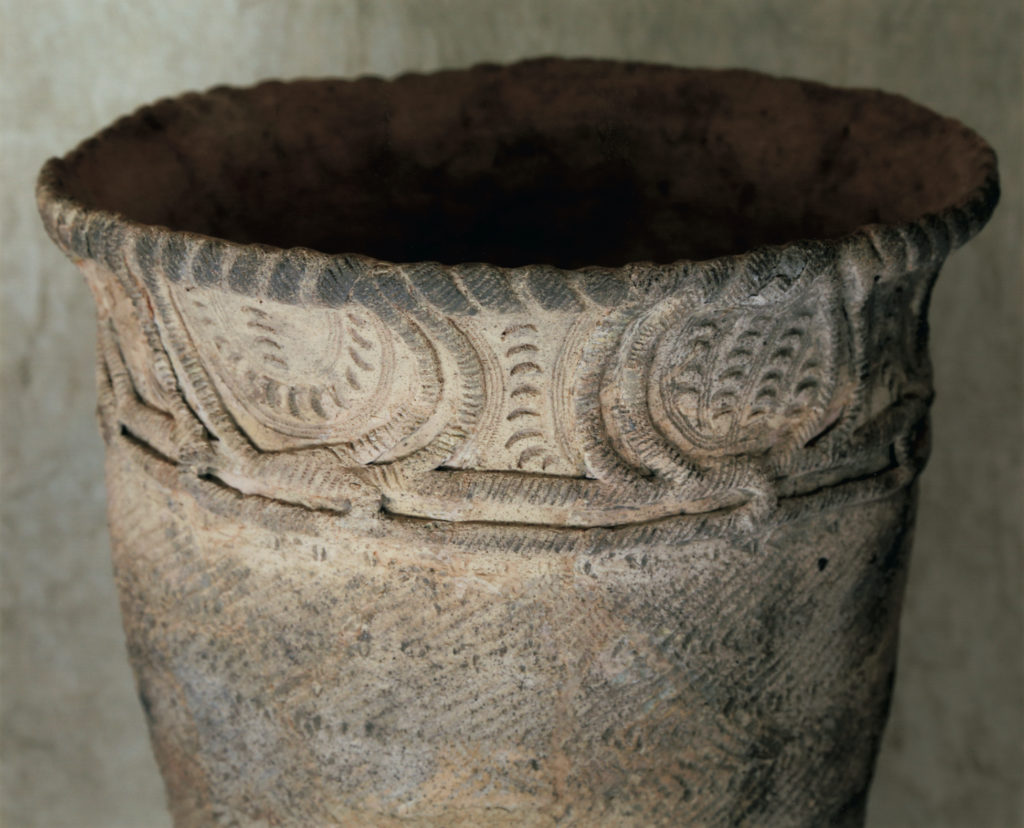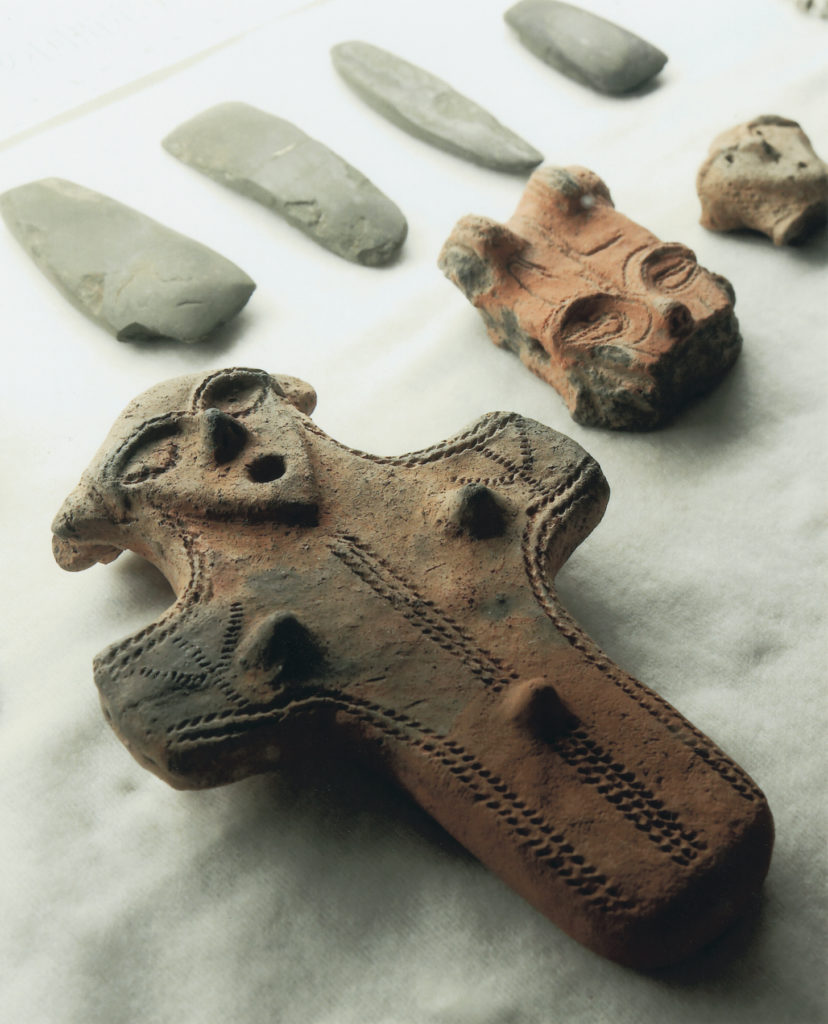Exploring Jomon from the Earthen Stage
Though still the season of tender greens, the morning sun rose bright and hot, bearing down like summer on the Tsugaru Plain in northwestern Aomori Prefecture. Fortunately, the breeze through my window provided some relief as I got ready to head off to the Tsugaru City Morita Museum of History and Folklore. When I arrived, I called the city’s board of education with the hope of meeting Mr. Tadashi Sano, a curator, a guide of Jomon culture, and an expert on excavations. Surprisingly, he personally answered my call and just minutes later approached, ready with sun hat and attire, for a day in the field. When you called, he said, I was preparing to leave, adding with a smile that I was lucky to catch him. I agreed, but when he said he wanted to visit the archaeological sites first, I knew I was indeed fortunate.
On trips to archaeological sites, I have tried to put off observing academic materials for as long as possible, preferring to visit the soil first, the place where ancient history happened. When exploring Jomon, I like to start by standing on the “earthen stage,” taking in the distant view, and by picturing the ancient landforms in my mind. While there may be nothing but rice paddies as far as the eye can see, I’m free to recall the fact that 6,000 years ago average temperatures were a couple of degrees higher, and the now distant coastline reached farther inland. So I followed the curving flow of the rivers and the remote ridges of Mt. Iwaki with my eyes, and let the power of nature bring back the view the Jomon people enjoyed from their dwellings and magically project it in my eyes. This view was a gift from a good guide.

A footpath ran between the paddies. Mr. Sano said he thinks the Jomon people walked on it, too. How could he possibly guess a thing like that? He pointed a finger south, in the direction of a grove, and told me to go on in. I made my way through the undergrowth, started climbing the shaded slope, and noticed that the path continued through the thicket. It goes on even farther, said Mr. Sano. After several rounds of excavation, his team found a stone circle off to the side of the path, but they buried it back in the soil. Sure enough, the path reached farther inward before it sank again, vanishing under the thicket.

At present the Ishigami site lies within a paddy at the tip of a low hill projecting into the pond. The Fujiyama site is farther south. Countless pieces of cylindrical pottery have been unearthed in this area, known for the cylindrical pottery culture associated with the Sannai Maruyama Special Historical Site, dating to the Middle Jomon about 5,000 years ago. Later excavations also turned up dwelling sites, clay figurines, clay products, and, most notably, fragments of shell-impressed pottery dating to the Initial Jomon about 8,000 years ago. In other words, even before the Sannai Maruyama Site, people must have lived in this area, obtained their food from the sea, and spread out to other areas. Standing here on land inhabited by humans for nearly 10,000 years, the private houses far away looked anachronistically charming.
On the way back, Mr. Sano told me about his experiences with archaeological sites and their preservation. Surprisingly, he believes the best place to preserve sites is in the earth. One way of sharing knowledge about the sites with a broad range of people is reconstruction. But sometimes a better way to pass on a site to future generations is not to leave it above ground but to study it and then return it to the earth, which has the added advantage of minimizing sun and weather damage. In any case, artifacts are most comfortable back in the soil, said Mr. Sano. One might think that an archeological professional should use the latest scientific technology to expose all secrets and solve all mysteries. Perhaps, but might it not be more appropriate to keep some history safe in its “earthen stage.”
Dig minimally and focus on preservation. With these intriguing words from Mr. Sano coloring my perceptions, I stepped into the museum and admired each of the unearthed articles in the light of the sun, overcome with emotion.


<From PAPERSKY no.39 (2012)>
Jomon Fieldwork | Nao Tsuda × Lucas B.B. Interview
A conversation between ‘Jomon Fieldwork’ Photographer and writer Nao Tsuda and Papersky’s Editor-in-chief Lucas B.B. The two discuss the ways Jomon culture continues to play an important role in modern day Japan. The video was filmed at Papersky’s office in Shibuya in conjunction with Tsuda’s exhibition “Eyes of the Lake and Mother Mountain Plate” held at the Yatsugatake Museum in Nagano.
Nao Tsuda | Photographer
Through his world travels he has been pointing his lens both into the ancient past and towards the future to translate the story of people and their natural world.
tsudanao.com











